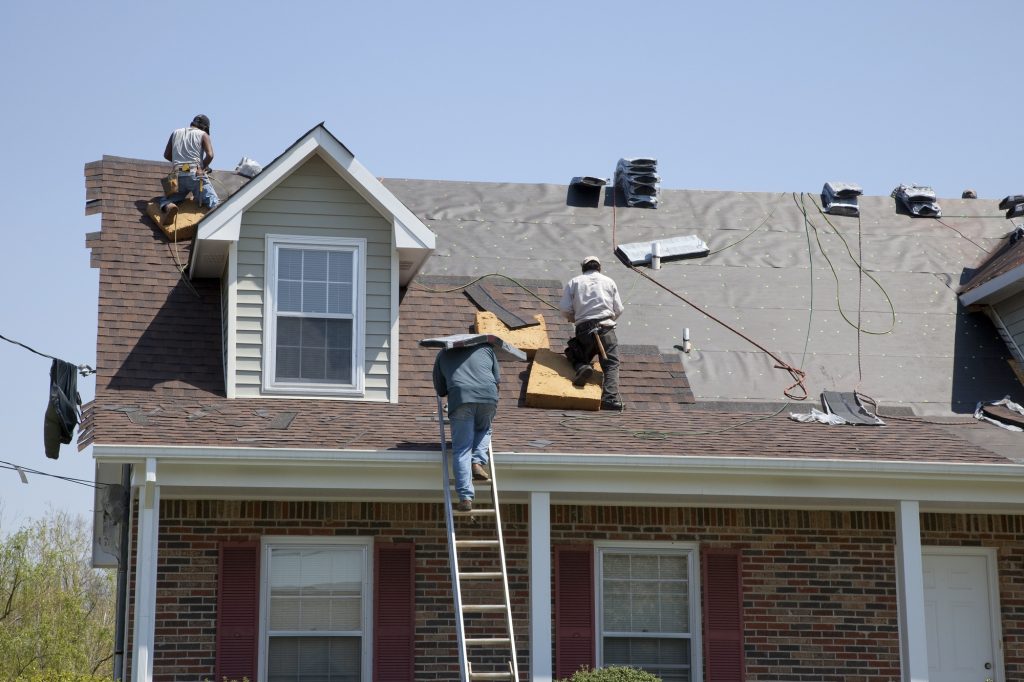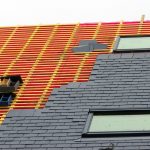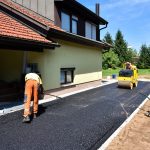Roof Damage and Repair Tips for Your Home
Many homeowners overlook their roofs a lot of the time. On most homes, it’s not the most easily observable part of the home up close. Yet, some of the most common homeowner’s insurance claims involve wind, hail, and lightning damage.
Any guess about the most likely object for wind and storm damage? Yep, it’s your roof.
Assuming you notice the roof damage right away, there is still the issue of roof repair. What is the best approach? Who should do it?
If you’re looking at roof damage repair or just want a plan in place to deal with it, keep reading for some keep roof damage info and roof repair tips.
Common Types of Roof Damage
There are several types of roof damage that you might see, depending on how long you live in a specific house. Let’s jump in and look at some of the more common types.
Missing Shingles
One of the most common types of roof damage is missing shingles. You typically see this as a result of wind damage to a roof.
Your average three-tab shingle is only rated up to around 60 miles per hour. Anything over that and there is a good chance that the wind will rip shingles loose from your roof.
Architectural shingles typically have wind ratings for around 130 miles per hour. These are common in places with hurricanes and tornadoes.
Punctures
Punctures are another common type of roof damage that you see after intense storms. High winds can dislodge weak limbs from nearby trees and send them through your roof. Ice storms can rip limbs free and drop them through your roof as well, which is why most homeowners trim back or remove trees that overhand their homes.
In extreme cases, a combination of wind and rain can uproot a tree and drop it across your roof, cause major structural damage to your roof and even walls.
Leaks
In most cases, leaks happen as a byproduct of other kinds of damage, such a missing shingles or punctures. Once the leak develops, though, it becomes a problem that you cannot ignore. The leak can damage the wood under the shingles, trusses, and cause significant damage inside the home.
Lightning Strike
While less common courtesy of lightning rods, lightning can and does still hit people’s roofs from time to time. A lightning strike can destroy shingles, the wood beneath, and even set fires. That’s to say nothing of the potential damage to your electrical system and anything attached to it.
Curious what else justifies a roof repair? You can head over here to read more now.
Roof Damage Repair
There are a couple of potential approaches to roof damage repair.
DIY
Some people attempt DIY fixes to roof damage repair. This is a risky move.
DIY fixes can nullify any warranty you have on the roof. Even worse, DIY fixes can make trigger the rejection of insurance claims for roof damage.
There is also the problem of correctly identifying the needed repairs. Unless you bring significant roofing experience to the table, you’re likely guessing about what the roof needs. That can mean doing repairs that don’t solve the problem or only partially fix the problem.
As a general rule, you should only take on a DIY roof repair as a last resort.
Professional Roofer
In most cases, the best route for roof repair is through a professional roofer. A roofer can assess your roof damage and identify all of the needed repairs, not just obvious ones.
For example, they can tell you whether replacing the missing shingles will do the trick or if you need to replace the wood underneath. A professional roofer can also provide a fairly accurate estimate of the cost. That is a task for which most homeowners lack the necessary experience.
Beyond that, a professional roofer can execute the repairs faster and more effectively than most homeowners. Professional work from a roofer also helps preserve roof warranties and roof insurance protection.
Roof Replacement
Depending on the level of storm damage or other types of damage, your home may need a partial or complete roof replacement.
“Wait,” you might ask, “partial replacement?” It may sound counterintuitive, but roof damage often happens on only one side of the roof. Let’s say winds hurl a tree limb through your roof like a giant wooden spear.
In that situation, the limb likely only punctured one side of your roof. Let’s say that your current roof is only five years old. You could still get another ten years or more of service out of the undamaged side of your roof.
Replacing the whole thing may not make sense. The roofer who comes out to assess the damage will typically make a recommendation about repair, partial replacement, or whole roof replacement.
Replacement Process
The replacement process happens in several steps. Protecting your property is their first step. The roofers will typically put down tarps and set up plywood to protect your siding and plants.
Next comes the tear-off, where the roofers will remove strip the roof down to the wood sheathing. Damaged wood gets replaced at this point.
The roofer will typically put down a water and ice barrier. Then, they’ll put down roofing felt and follow that with the new shingles.
Once the shingles are on, the roofer will typically do a final cleanup and remove waste materials. They’ll commonly use a portable dumpster for waste.
Roof Damage Repair and You
Discovering roof damage of any kind is always stressful. Damage to the roof opens you up to all kinds of other problems, such as leaks, pests, and internal damage in your home.
While attempting a DIY solution may feel tempting for experienced DIYers, it’s not a great plan. DIY fixes may not repair the problem and can void warranty and insurance coverage for your roof. Getting a professional on the job helps protect your home and your coverage.
Looking for more home improvement or home repair tips? Check out the posts in our House and Home section.





